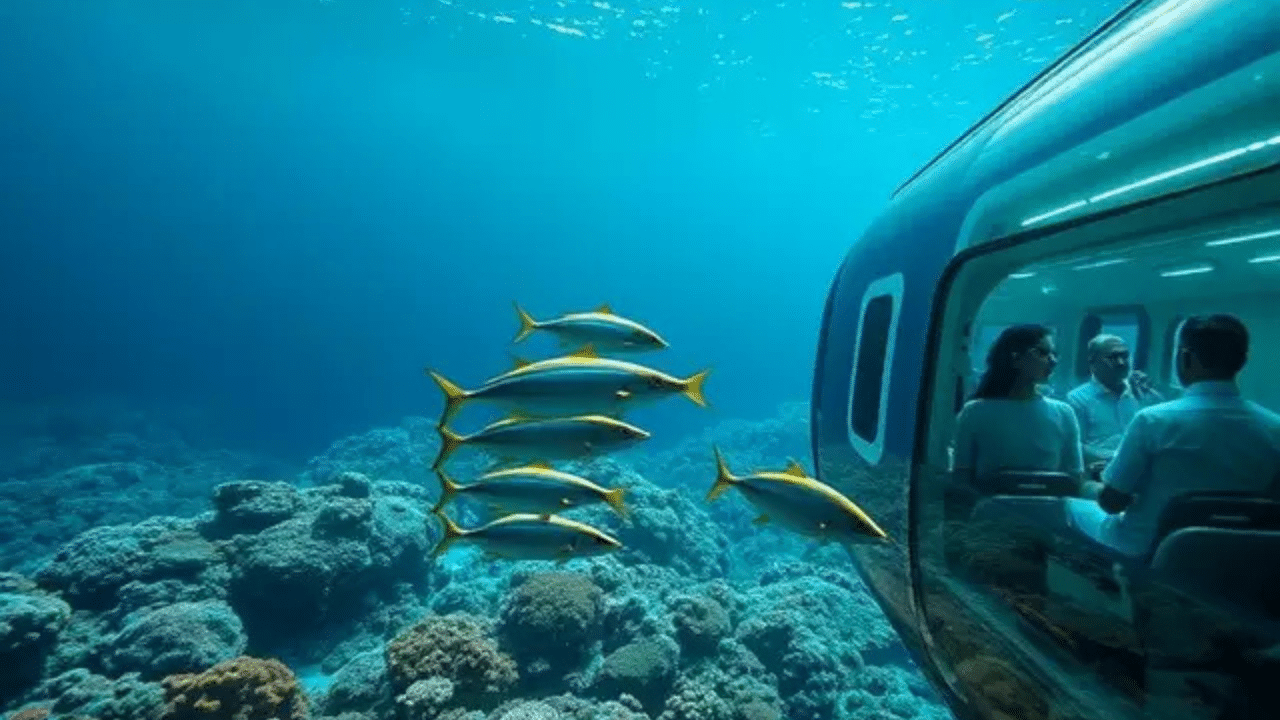In a groundbreaking development, a UAE-based company has proposed an underwater high-speed rail that could connect Mumbai and Dubai at a staggering speed of 1,000 km/h. If realized, this ambitious project could redefine global connectivity, trade, and tourism, offering an alternative to air travel between India and the UAE.
What is the Mumbai-Dubai Underwater Rail Project?
The proposed railway would function as a submerged high-speed transportation system using cutting-edge hyperloop technology. The key objectives of this futuristic transport corridor include:
- High-speed travel: Expected to reduce travel time between Mumbai and Dubai to just 2 hours compared to the 3-hour flight duration.
- Passenger and cargo transport: The system will facilitate not just passenger movement but also transport water and oil between India and the UAE.
- Eco-friendly connectivity: The underwater train would use advanced sustainable technology to reduce carbon emissions.
How Will This Underwater High-Speed Rail Work?
The hyperloop-style train will run in a vacuum-sealed tunnel beneath the Arabian Sea, eliminating air resistance and enabling ultra-high speeds. The concept, inspired by Elon Musk’s Hyperloop technology, would make use of magnetic levitation (maglev) systems, allowing frictionless movement.
Economic and Strategic Impact
The Mumbai-Dubai underwater rail is more than just a futuristic transportation marvel. It has the potential to:
- Revolutionize business and tourism by improving connectivity between the two economic hubs.
- Enhance trade relations between India and the UAE, facilitating the transportation of vital resources such as freshwater and crude oil.
- Reduce dependency on air travel, creating a cost-effective and sustainable transport alternative.
Challenges & Feasibility
While the project sounds promising, experts highlight several challenges, including:
- Massive infrastructure costs due to the complexity of building an underwater vacuum tunnel.
- Engineering hurdles such as ensuring safety from underwater pressure and seismic activity.
- Regulatory approvals from both India and the UAE, along with environmental impact assessments.
A Bold Leap Towards the Future
Though the project is still in the conceptual phase, its announcement reflects a growing interest in futuristic transportation solutions. If successfully executed, the Mumbai-Dubai underwater rail could be a game-changer in global transport, setting new benchmarks in speed, sustainability, and connectivity.



